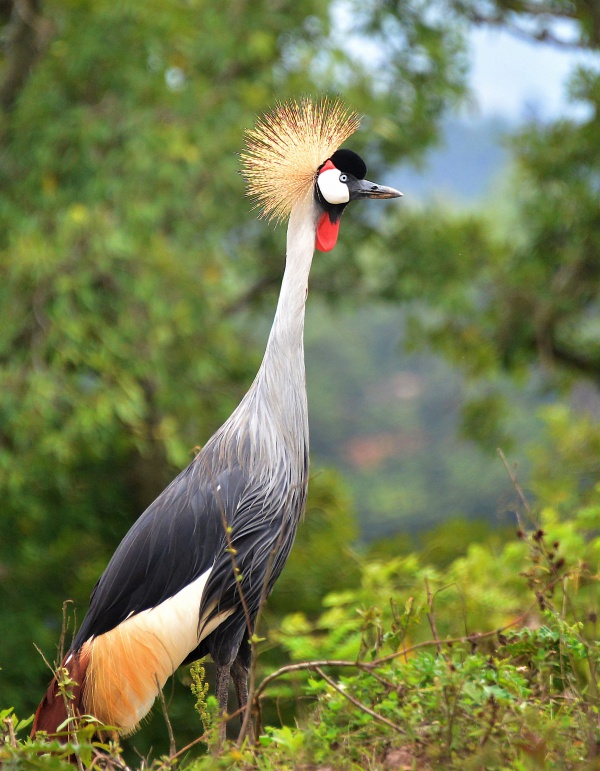Facts About Grey crowned crane
The grey crowned crane, also known as the African crowned crane, is a magnificent bird native to eastern and southern Africa. This graceful avian is so cherished that it has been designated as the national bird of Uganda. It is closely related to the black crowned crane and comprises two distinguishable subspecies. The East African grey crowned crane can be identified by a larger area of red skin on its face compared to the South African crowned crane.
Standing about 1 meter tall and weighing around 3.5 kilograms, the grey crowned crane is truly an impressive sight, with a wingspan stretching up to 2 meters. Its plumage is predominantly grey, accented by white wings and a prominent black patch. However, what truly sets it apart is the crown of stiff, golden feathers adorning its head. Unlike other crane species, this bird has the unique ability to roost in trees.
In terms of diet, grey crowned cranes are omnivorous. Their diverse menu includes plants, insects, frogs, and even small fish. Often, they forage alongside grazing herbivores, which assist them in finding food more easily.
These cranes are renowned for their captivating courtship behaviors. Their mating rituals involve elaborate performances, including dancing, bowing, and jumping. Their courtship calls are equally distinctive, featuring a booming sound and a honking call. They build their nests during the rainy season, with both parents sharing incubation duties. The chicks are precocial, capable of running soon after hatching and fledging within a few months.
Regrettably, the grey crowned crane faces numerous threats such as habitat loss due to drainage, overgrazing, and pesticide pollution. These challenges have led to the species being classified as endangered, with an estimated global population of only 58,000 to 77,000 individuals.
The grey crowned crane holds a special place in Ugandan culture, symbolizing grace and beauty. It is proudly featured on the country's flag and coat of arms, serving as a poignant reminder of Uganda's rich natural heritage.

 Eswatini (Swaziland)
Eswatini (Swaziland)